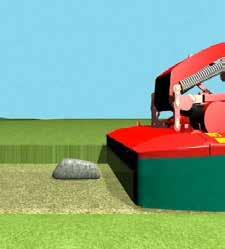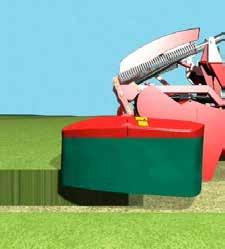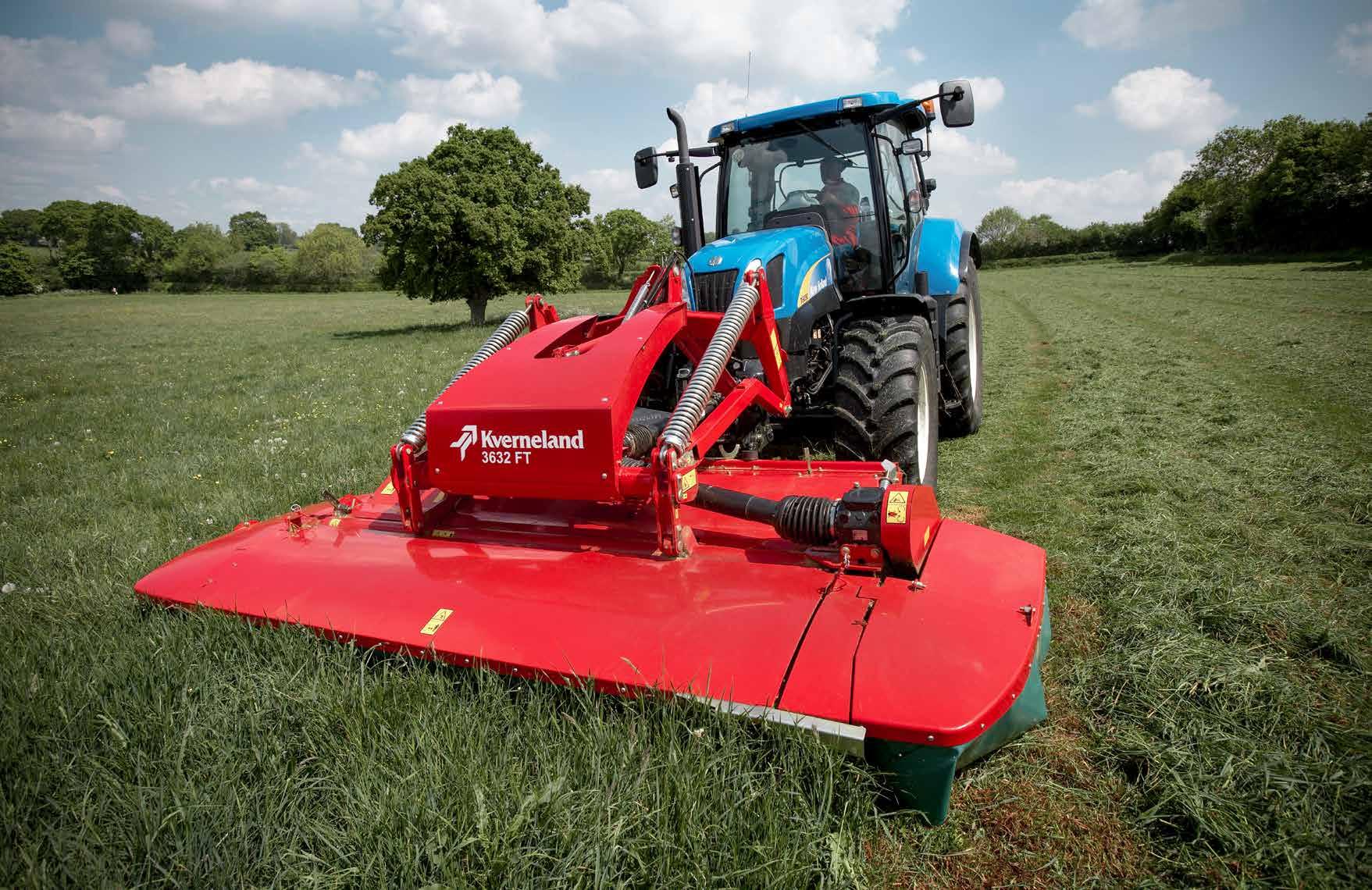
1 minute read
FLOATING SUSPENSION DESIGN - EFFICIENCY AS STANDARD
Vertical Adaptation
The innovative suspension design allows a transverse adapation of 24°.
ActiveLift
ActiveLift ensures maximum protection of the cutterbar during operation. If hitting an obstacle the mower will move back and up.
Floating Suspension
Floating suspension concept with threedimensional adaption. Excellent down and upwards ground following ability of 250mm and 420mm respectively.
Excellent Stability
Suspension springs are moved further outwards for better side stability and even ground pressure.
Excellent Visibility
Excellent visibility during transport and work. The design of the suspension provides an undisturbed view.
Full Range for Any Combination
Requiring 2.8, 3.2 or 3.6m, roller, steel or nylon tine conditioning, the Kverneland 3600 series includes a mower that will go into any combination to optimise productivity.
The cutterbar will move back and up, due to the geometry of the suspension.

Floating Suspension with Three-Dimensional Adaptation
The Kverneland ActiveLift system ensures maximum protection of the cutterbar during operation. If hitting a stone or foreign obstacle, a three-fold action takes place simultaneously.
The suspension design has been redesigned to offer even better flotation and more even ground pressure. The two large suspension springs have been moved further outwards to provide better side stability, which is reflected in optimum protection of the stubble and far less skid wear.

Tension in the ground pressure springs increases, adding additional lift and the angle of the cutterbar repositions from 4° downwards to horizontal.
The moving pattern of the machines is extremely flexible, allowing downwards movements of 250mm and upwards of 420mm. In addition an innovative suspension design allows a transverse adaptation of 24°. This ensures excellent adaptation to uneven ground contours and higher reachable speed.
Excellent down- and upwards ground following ability of 250mm and 420mm respectively.










